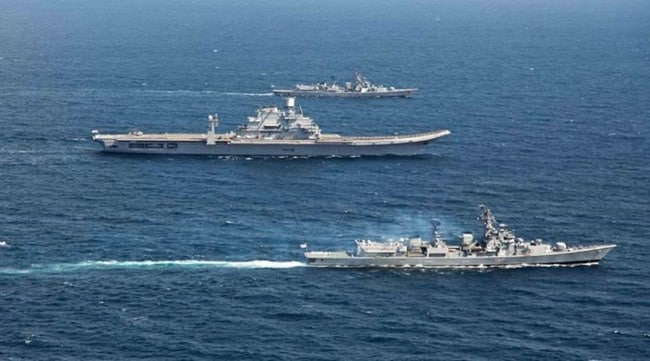Opinion Dismantling old ships won’t reduce India’s carbon footprint — it will only create more problems
A recent notification issued by the Director General of Shipping imposing age restrictions on ships could significantly hamper efforts at decarbonisation and improving the share of coastal shipping in Indian logistics
 The notification issued by the Director General of Shipping is estimated to affect 90 per cent of MBCs currently sailing in India. (Representational)
The notification issued by the Director General of Shipping is estimated to affect 90 per cent of MBCs currently sailing in India. (Representational) Written by Ameya Pratap Singh
On February 24, the Director General of Shipping issued a notification imposing age restrictions on ships in India. This was promoted as a “pro-environment” move intended to improve the quality of Indian tonnage. However, the policy could not only fail to decrease carbon emissions but could also significantly hamper the Ministry of Shipping’s ostensible push to enhance coastal shipping.
The notification imposes an age restriction on ships that can berth at Indian ports. Earlier, no such age restriction was applicable to ships in India (foreign and Indian flag). Once a ship was of a certain age, norms related to its inspection by the Indian Register of Shipping were tightened, requiring more regular check-ups at shorter intervals with dry docking. Now, the Director General of Shipping intends to do away with cargo ships older than 25 years altogether, albeit after three years. Such a policy has also been adopted for vehicles and other carbon emitters to make way for new-age engines and better environment standards. So, what is the issue with ships?
Ships are quite unlike vehicles. The average cost of fabricating a new mini bulk carrier (MBC) — the smallest class of cargo vessel used almost exclusively for coastal shipping — is between Rs 25-30 crore. Indian shipping has remained a historically challenging sector to raise funds for. Considering the high cost of shipbuilding, the Indian government’s measures to provide viability gap funding and provide the shipping sector “infrastructure status” will fall short of meeting industry requirements, especially for smaller ship owners who lack the deep pockets of large shipping lines.
This problem is further aggravated as ships are not readily available in showrooms and need to be commissioned from shipyards, and India is woefully undersupplied on this front. Most public sector shipyards are focused on the building of larger ships for defence purposes. Private shipyards in India are few and far in-between. The two largest ones, ABG Shipyard and Bharati Shipyard, went bankrupt in the 2010s. Not only does shipbuilding in India struggle because of its capital-intensive nature, skilled manpower is also inadequately available.
The notification issued by the Director General of Shipping is estimated to affect 90 per cent of MBCs currently sailing in India. Most of these ships are unlikely to be replaced due to financing challenges and the non-availability of shipyards. This would result in fewer ships and more cargo shifting away from coastal shipping to road and rail logistics. Instead of improving the quality of Indian tonnage, this would defeat the Ministry of Shipping’s objective to reduce carbon emissions in India. As compared to road or rail, shipping has lower levels of carbon emission. Ninety per cent of the world’s goods move via the sea but shipping only accounts for 2.9 per cent of global emissions. By creating norms that significantly hamper the prospects of coastal shipping, the notification issued by the Director General of Shipping will prove detrimental to the cause of reducing India’s carbon emission. Moreover, road and rail logistics are also more expensive across distances above 500 miles and therefore, the diminishing of coastal shipping is also likely to have an inflationary impact by raising input costs for various commodities.
A viable alternative would be for the Director General of Shipping to come out with strict standards for ships on the subject of environmental compliance. Ships don’t die easily: When the steel wears thin, it is simply cut out and replaced; when the engine gets old, it is swapped; when the sewage treatment system becomes outmoded, it is redesigned. The retrofitting or rebuilding of ships is common. Considering this, it would be far more cost-effective and practical for the Director General of Shipping to demand higher environmental standards from existing Indian tonnage rather than purging it entirely. Ship owners should be forced to reduce their carbon footprint. But this can be done in a manner that is not forceful and counterproductive. There are engineering solutions to integrate new age fuels such as green hydrogen and green ammonia in old ships as well.
The Ministry of Shipping has made great efforts to improve the standard of coastal shipping in India. For instance, coastal ships have priority berthing at major ports and also enjoy concessional wharfage rates. The focus on developing inland waterways too has been beneficial in this respect. However, in one fell swoop, the notification issued by the Director General of Shipping could undo this progress and significantly hamper efforts at decarbonisation and improving the share of coastal shipping in Indian logistics. Instead, a more measured and tactical response could balance both objectives simultaneously.
The writer is a DPhil (PhD) from the University of Oxford and the Managing Director of Yogayatan Ports in Mumbai


